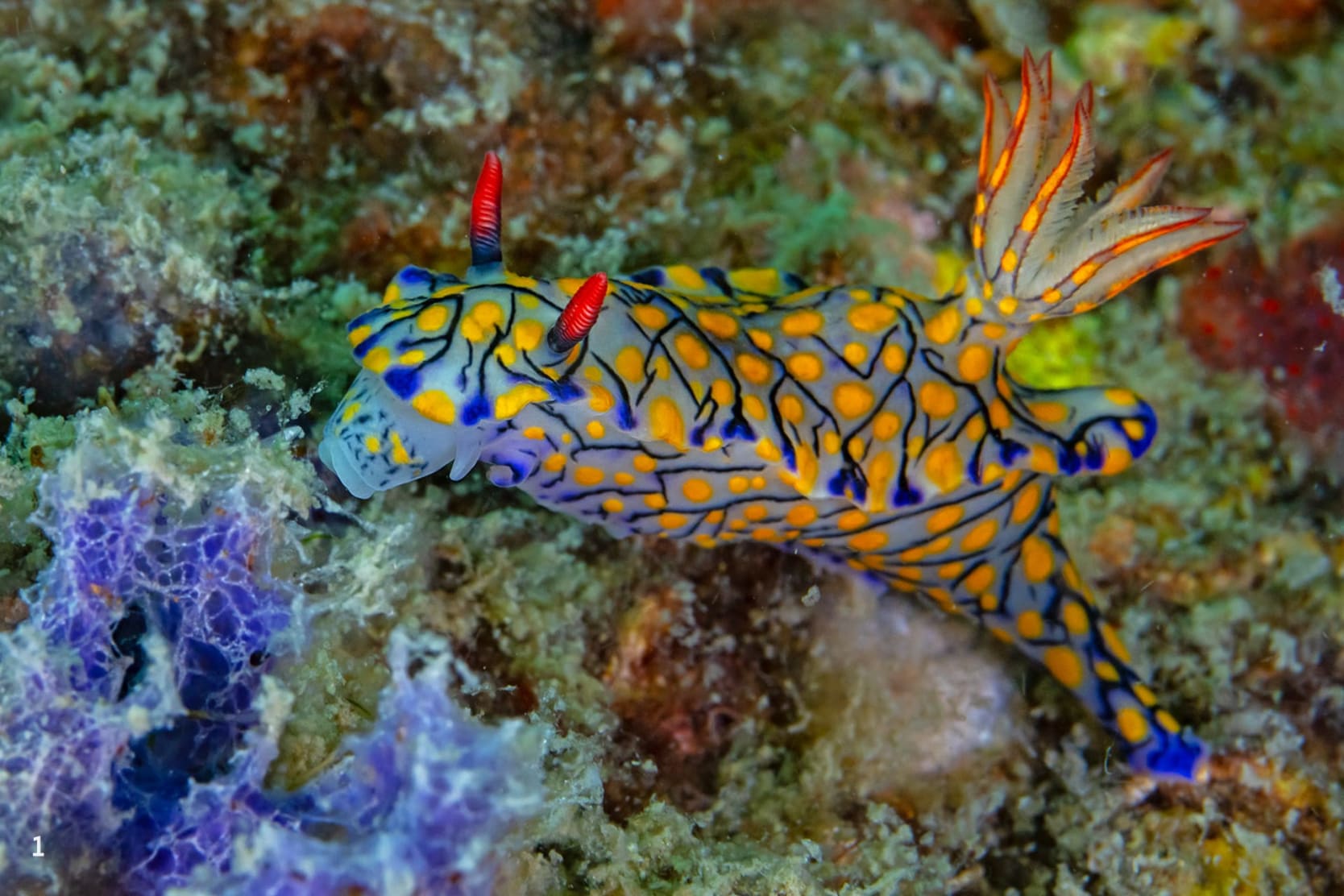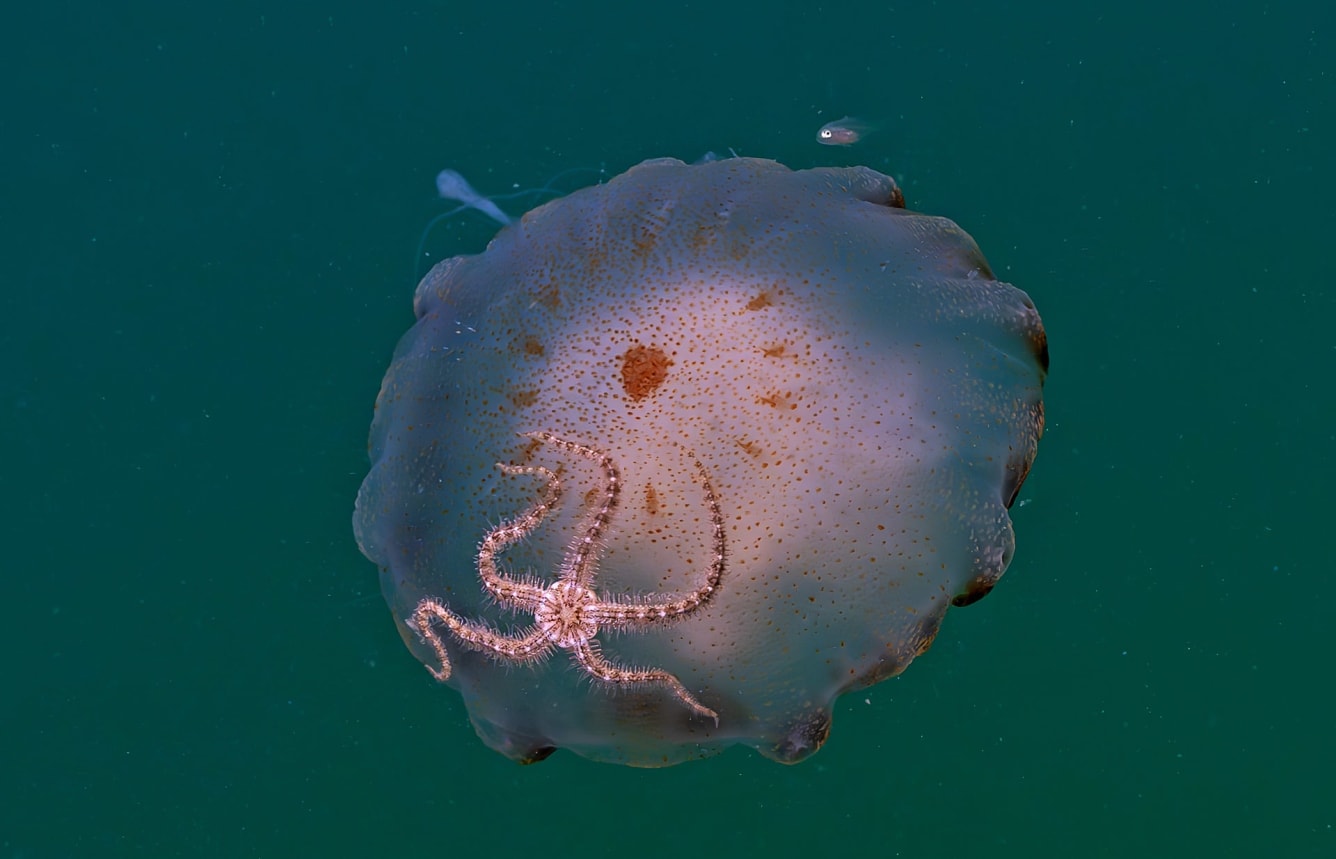 Listen to this article
•
15:34 min
Listen to this article
•
15:34 min
As we sat on the boat waiting to get to our dive site, our dive guide pointed to the horizon and said, “...this reef used to run for kilometres!”. Some parts of the coral reef (of large boulder corals) that he was talking about were becoming visible a few feet below the surface of the water. As we kitted up for our dive, I was told not to expect too much life around this coral reef and that we would see a bustling diversity of life on our second dive at an artificial reef. Our dives at the coral reef felt like floating through an abandoned city. Vast boulder corals that looked pale white, as if they had just seen a ghost (read: climate change). Jellies with tentacles longer than my body floated through the murky water, signalling warm waters and eutrophication (i.e. excess nutrients in the water due to run-off from human activities). Between the bleached coral, small pockets of live coral harboured groups of damselfish. Our dives at the artificial reefs, as promised, were filled with a lot more dynamism — sea cucumbers, anemone, sharks, eels and an aggregation of nudibranchs. Corals, however, were visibly absent at the artificial reef sites we visited.
We were scuba diving close to the shores of Pamban Island, a narrow landmass that sits between the Indian mainland and Sri Lanka. The geological structure of the landmasses looks a bit like Michelangelo’s “The Creation of Adam”. On either side of this narrow strip that runs between the two countries are two shallow waterbodies, the Gulf of Mannar to the south and Palk Strait to the north. Both these waterbodies are narrow inlets where the oceans make their way toward land. As a result, their shallow nutrient-rich waters host a diversity of habitats — coral reefs, seagrass beds, and mangroves. These habitats bring with them incredible biodiversity. According to the Information Booklet on Gulf of Mannar Biosphere Reserve published by the ENVIS Centre, Department of Environment, Government of Tamil Nadu in 2015, the Gulf of Mannar alone is home to more than 4,200 species of flora and fauna.
Our dives around Pamban Island took place in July 2024, when these waters had experienced record-high temperatures, like most of the world’s oceans at the time. When the water gets too hot for a coral species, they expel the symbiotic algae (zooxanthellae) living on them and providing them with food (the algae also give the corals colour).


While coral like Porites that are typically thought to be resilient had bleached severely across the reef, some coral like (1) Favia and several (2) large Acropora remained unbleached. Interestingly, this pattern of bleaching seems to go against those generally observed in the region. Studies from the region, such as “Bleaching and recovery patterns of corals in Palk Bay, India: An indication of bleaching resilient reef” published in the journal Regional Studies in Marine Science (2016) and several others, suggest Porites is more likely to weather the bleaching storm. It remains to be seen how well these large corals recover (if they do) and if the Favia and Acropora continue to hold on.
A few minutes’ boat ride from the coral reef is an artificial reef made of structures placed underwater by local organisations. These structures are set up to provide habitats for marine life of all sizes. Among the reef’s largest residents were two remarkable predators, the honeycomb moray eel (Gymnothorax favagineus) and the bamboo shark, which used the structures in slightly different ways.

The nocturnal bamboo shark uses the structures to stay hidden during the day while it rests. Though the shark in this image could use a few more tries to find a more effective hiding place. Bamboo sharks typically take refuge inside rocky crevices and would usually minimise this much vertical exposure when hidden.
The metal structures of the artificial reef were almost entirely inhabited by sea sponges. In brilliant shades of orange, white, purple, and brown, they were growing on and out of every nook of this reef (in the background of 1 & 2). These filter-feeding lifeforms seemed to be thriving on the reef. Where sponges are abundant, so are those that feed on them. (1,2, & 3) Dorid nudibranchs are a group of sponge-feeding animals that are easy to find. These finger-length sea slugs look like small, fantastically coloured pieces of candy. Everywhere on the reef, I could see clusters of nudibranchs as they slowly inched all over the imaginatively shaped reef structures, chomping away at the sponge.
When we were at the artificial reef, we saw an unusual sight — an anemone had latched onto a woody branch tethered to the underwater structures. This animal, which typically attaches to rocky structures, was swaying on an underwater branch.
Jellyfish like Chrysaora sp. were the most ubiquitous presence at both the coral reef and the artificial reef. In the murky blue-green of the water, jellyfish tentacles moved like lines of smoke trailing a floating orb. A closer look at the jellies would reveal tiny hitchhiking fish that hid between the stinging tentacles for safe passage.

It was ironic that in a time and place where corals, a member of the phylum Cnidaria (jelly-like animals with stinging abilities), were fighting for survival, jellyfish, also members of the same phylum, were thriving.















